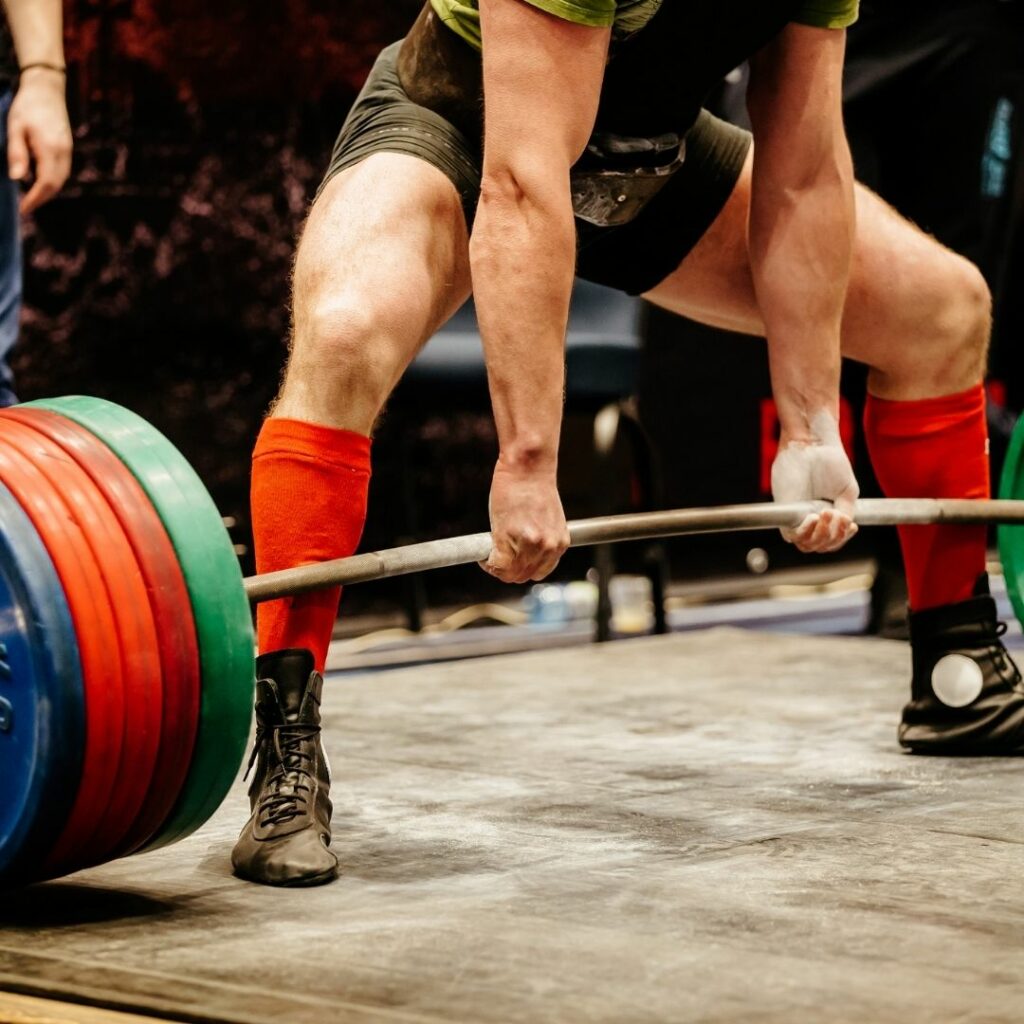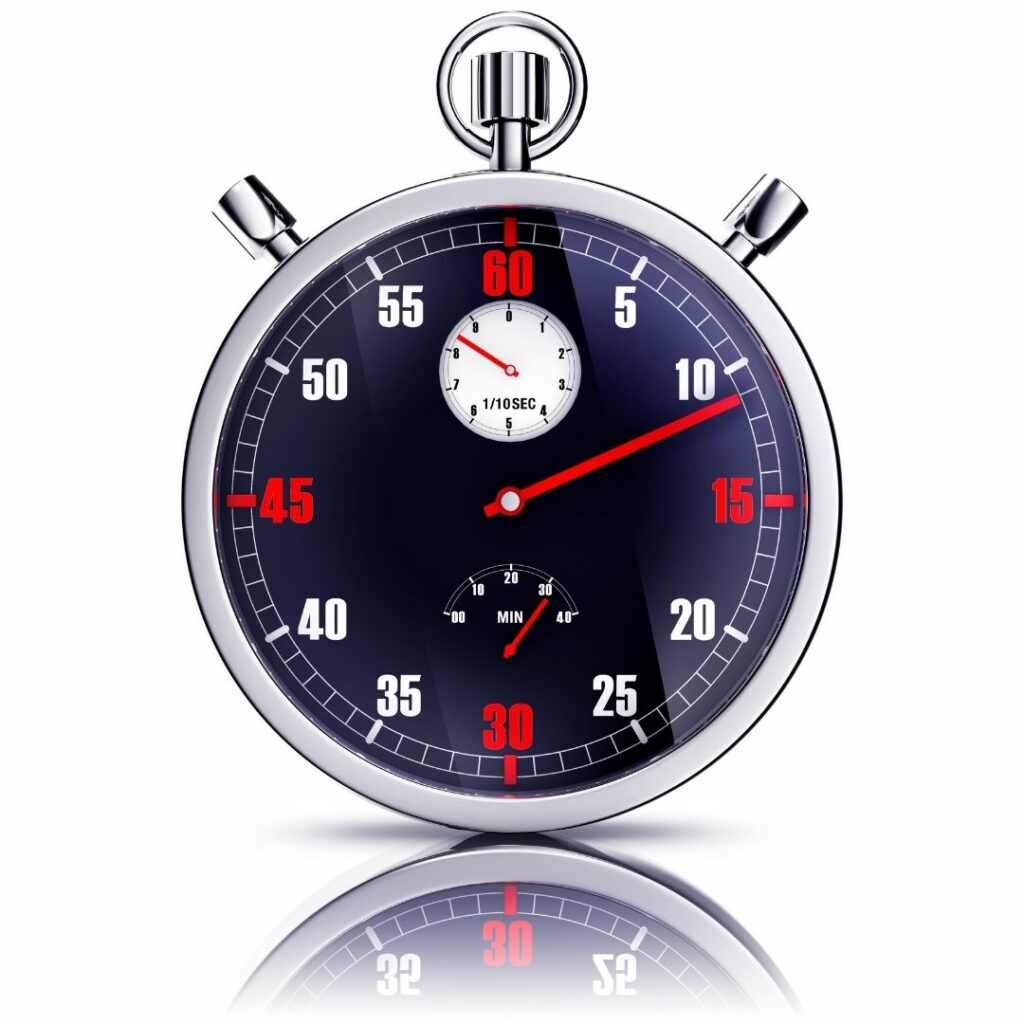Recently, a client shared a research article on mental health which showed that strength training helped with anxiety symptoms when participants trained at “moderate,” but not “high,” intensity.

First, this is an exciting finding. If you can improve your mental health even partly without medications, that’s very powerful, especially if you can improve your physical health in the process. That’s why it is great news that strength training helps with anxiety in older adults, young adults, and even adolescents.
Since we try to help clients train at their best intensity at StrengthSpace, our client wanted to know if what we do qualifies as “moderate” or “high” intensity, as per the article.
So what I want to do is to explain the different ways that exercise researchers use the word “intensity”, and then discuss our own philosophy for selecting weights at StrengthSpace.
In our studio, we deliver supervised strength training to many clients with diverse medical issues, including depression and anxiety, Osteoarthritis, Osteoporosis, Ehlers-Danlos hypermobility, and POTS. We know a thing or two about selecting weights that are safe and effective, and my hope is that even if you exercise on your own, this article will equip you to think about “intensity” correctly, and to choose the right weights to safely get the most from your workouts.

Defining intensity based on weight.
For our purposes, we’ll look at the two main definitions of exercise “intensity.” The most common is in reference to the most weight a person can lift, which is called their “1RM” or 1 repetition maximum. A “high” intensity might be 85-90% of that 1RM, where as a “moderate” intensity might be 60-70% of 1RM. Let’s say you can leg press 200 pounds just one time. To train with “high” intensity under this definition might be to select 170 pounds (85% of your 1RM) to exercise with, while a lifting 135 pounds (65% of 1RM) would be a moderate intensity weight.
And this is how the researchers used the term “intensity” in the study. They found that people who trained with the more moderate loads (60-70% range) tended to see a bigger benefit in their anxiety levels than people who trained at “high intensity” (with very heavy weights). Using weights that are so heavy they can only be lifted two or three times can be intimidating! Luckily, there’s another way to both understand, and achieve, optimal exercise intensity.
Defining intensity based on effort.
At StrengthSpace, we use a different understanding of intensity. When we say that a set of exercise had “high intensity,” we don’t mean that it was necessarily heavy, but that it involved a very high degree of effort. We know that if our level of effort is high enough, even lighter loads can help reverse age-related muscle loss (sarcopenia). This means we can get the benefits of resistance training, without having to take the risk of extremely heavy weights.
No matter how light the weight is, if you work for long enough, the fatigue you experience will make it feel heavy. And it is in this sense that “moderate intensity” weights (per the first definition) can be used with a high intensity of effort (per our second definition). When we focus on training to the highest intensity of effort we can, we get the best of both worlds – the safety of moderate weights, but the stimulation of heavy weights.
So how do we pick “moderately” heavy weights?
Using the first definition, taking 70% of your 1 repetition maximum (1RM) sounds simple enough. But you have to know what your maximum is to do that, and safely performing a maximum lift is not easy. For many exercises, just setting this up on your own can be difficult and dangerous. For this reason, I do not advise that you select your training weights in this way.
At the same time, most people are not a good judge of how strong they are. When asked to lift a weight once, most people will underestimate how many more repetitions they can do. This means that if I tell you to “pick a weight you can lift 8-12 times with good form,” you might actually pick a weight you could have lifted 20 times or more. And since the weight will be too light, you won’t get a good training effect from lifting it 8-12 times.
This is why continuous tension training to muscular failure is a simpler approach for selecting loads and dialing in the right effort. If you want to be sure you have fatigued your muscles enough, the best way is simply to keep moving the weight safely until you can’t budge it another inch with good form (no breath holding, heaving, bouncing, etc). The thorough fatigue you’ll experience from “hitting the wall” will be enough to safely stimulate your muscles, and you won’t have to worry about making sure you did enough repetitions.
Time Under Tension – A straight-forward way to track workouts and pick weights.

Instead of telling you to lift a certain weight 8 or 10 times, I’m going to suggest you do what we do at StrengthSpace – track the time your muscles are under tension. With “isometric” (non-moving) exercises like planks and wall-sits, it’s obvious that you can’t count reps, and have to track seconds and minutes instead. But even with dynamic exercises like leg-presses and pushups, tracking time is a more “honest” way to record your workouts.
Consider this: if I do 8 reps today, and 10 reps next week, I might have gotten stronger. Or, I may have just done sloppier reps the second week. However, if my muscles last for 90 seconds today, and 110 seconds next week, it’s less likely that I used bad form and hasty repetitions to “improve, and more likely that my muscles actually gained strength and endurance. Time is a more objective, and precise measurement, which helps us to know when we are ready to advance in weight safely.
A simple way to pick the right weights when strength training.

To minimize anxiety both during AND after strength training, try this simple framework of picking weights based on how long you can last during an exercise.
- Upper body exercises should last for about 1.5 minutes (90 seconds),
- Lower body and trunk exercises should last about 2 minutes.
- If you come up 20-30 seconds too short, go lighter next time.
- If you go 20-30 seconds too long, go slightly heavier next time.
- Avoid anxiety by avoiding over-training AND overthinking!
That’s it, in a nutshell.
Select weights (or variations in the case of bodyweight exercises), that allow you to last about 90 seconds for your upper body exercises. If you can barely last 60 seconds, the load or variation is too difficult. Drop the weight 10%, or pick an easier variation of an exercise, such as switching from regular pushups to knee pushups. If you can comfortably last 120 seconds with good form, consider progressing the difficulty by increasing weight by the smallest possible jump, or making the bodyweight exercise slightly more difficult.
For legs, just shift the times up towards a 2 minute (120 second) target. If you can last 2:30, consider a small increase in difficulty. If you can barely last 90 seconds, it’s probably smart to lighten it up a little.
An example workout using continuous tension training.
Consider Kelly, in the example workout provided on our homepage. Let’s say she records the following durations the next time she does her home exercise routine.
- Rear delt flye exercise: 8 pounds for 8 reps, time, 1:20. Keep weight the same.
- Suspension rows: 13 reps with her feet 30 inches from the door, time: 2:05. Too easy, move feet forward to increase difficulty.
- Standard Pushups: 4 reps in 0:45. Too difficult, regress to knee pushups.
- Wall sit: 2:35. Too easy, consider 1-legged variations, or hold a weight in hands.
- Body weight squat: 10 repetitions in 2:15. Keep the same since wall sits will be harder next time.
Hopefully this example gives you a clear idea of how to apply the simple heuristic of 90 seconds (+/- 30″) for upper body, and 120 seconds (+/- 3o”) for lower body.
But what if I prefer lighter or heavier loads?
The above framework is a very general one, and if that average person sticks to it, they’ll have good success. But of course, individuals vary in the types of loads they are most comfortable with. Some people are more “fast twitch” dominant, and may find longer times under tension to be very uncomfortable. The longer the set lasts, the more your muscles will burn, and you may prefer the feel of slightly heavier loads to make exercise a little less uncomfortable. Or, you may find heavier loads very intimidating, and feel safer with lighter loads and longer sets. Either is fine, so choose the approach that helps you be consistent!
Your mileage may vary, but you won’t go wrong by starting with a moderate load, and slowly, week by week, progressing loads in keeping with the 90/120 guideline above, until you reach weights that are challenging but don’t feel dangerous. There is no hurry if we are playing the long game. What matters most is that you stay safe, and feel thoroughly challenged by your exercise.
Don’t hesitate to reach out!
I hope this article was helpful to you. If you are interested in strength training to alleviate your anxiety or other health issues, but still feel that you need proper coaching to get started safely, please shoot us an email. If you aren’t close to StrengthSpace, we will try to point you in the direction of a like-minded trainer in your area.

